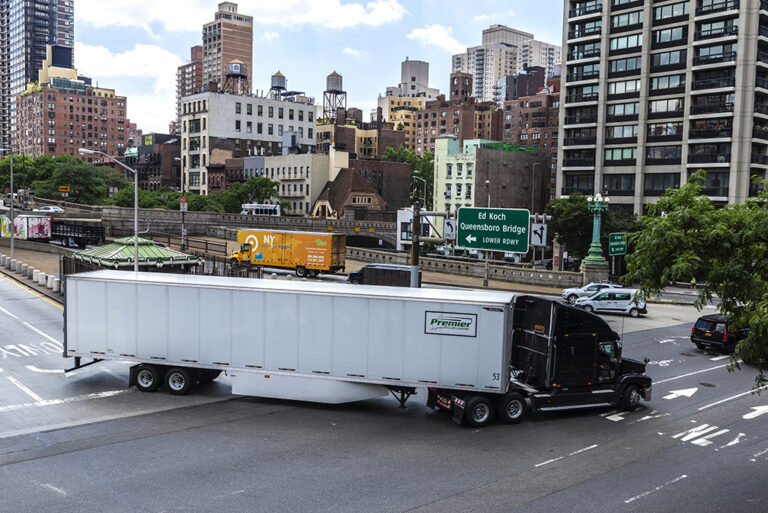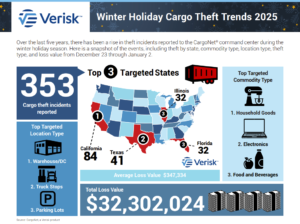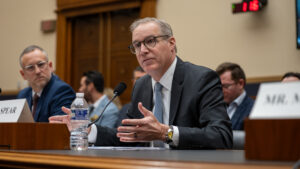Anyone who has driven a commercial vehicle professionally has likely received a ton of training in defensive driving. Whether the training is from the National Safety Council, the Smith System, an insurer of a trucking businesses or some other source, the focus always points to keeping yourself out of accidents, regardless of who might be a fault for causing them.
However, some situations call for driving that, for lack of a better term, is aggressive in nature. Turns made at intersections, for example, sometimes require the driver of a commercial truck to occupy more than one lane or to turn into a lane with oncoming traffic, occupying the space before another motorist does. Another example is merging your vehicle into another lane, as when the signs say that the lane you’re in is coming to an end. Your turn signal is on, but traffic in the lane you need doesn’t seem to notice. At some point, you’ll need to either change lanes or come to a stop.
Some types of aggressive driving, such as traveling too close to the vehicle ahead in hopes of intimidating the driver into speeding up or moving over, are simply foolhardy. At other times, such as the examples just mentioned, being aggressive is almost a necessity — as long as it can be done safely.
There are rules to any sort of aggressive driving.
First and foremost, aggressive maneuvers should be used only when absolutely necessary. Every driver faces intersections where it is impossible to make a turn without using a part of a lane used by oncoming traffic. If traffic is light enough, it is sometimes possible to use that space without much accident risk. When traffic is heavy, however, it’s another story. Picking the right time to pull out, making sure oncoming traffic is aware of what you’re doing, is the key.
It’s also important to understand the risk of the maneuver you’re planning to make. Will other traffic have time to slow down or stop when you make the maneuver? For a lane change, for example, turn signals are only one form of communicating your intentions. Lane positioning can help others understand your intentions, too. Even a slight shift of your vehicle from the center of your lane to the edge closest to the lane you want can help communicate what you’re doing to others.
A part of understanding the risk is this: Never assume that the other driver will react as you would.
As a professional driver, you would know how to react when a large vehicle is moving into the lane ahead. An amateur, however, may not be able to see the cones and barrels in the lane ahead of the truck, and he or she may not be prepared for movement. Worse, the motorist may decide to accelerate, attempting to get ahead of the truck moving into the lane. After all, big trucks are slow and cumbersome, while cars are fast and agile, right?
In another scenario, commercial vehicle drivers sometimes have difficulty making left turns against oncoming traffic. After waiting for what seems a long time for an opening in traffic, drivers sometimes see a gap and go for it. In some cases, the speed of the oncoming traffic is underestimated. In other cases, an assumption is made that oncoming vehicles will see the large truck turning in front of them and will slow, as necessary, to avoid a collision.
In this case, the problem is that the turn isn’t complete until the trailer clears the intersection. That can be as long as 20 to 25 seconds after the driver initiates the turn. An oncoming vehicle travelling 55 mph can cover one-third to one-half of a mile in that time frame, perhaps reaching the intersection before the trailer clears. If that driver is distracted in any way, the turning truck may not be seen until it’s too late to react.
Driving defensively should be the default attitude of every professional. Where driving aggressively could put you at the mercy of mistakes made by others, defensive driving helps protect you from the consequences of those mistakes. So, while you’re figuring out how to make that lane change in heavy traffic, remember that the driver behind your vehicle also wants to change lanes, and the driver overtaking you in the lane needs to be prepared for your maneuver. It’s important to know what’s going on all around and to anticipate the poor decisions of other drivers.
Finally, never allow impatience to dictate your driving decisions. It’s easy to get frustrated when attempting a turn or maneuver when traffic isn’t cooperating. There is no “long enough” when it comes to waiting for a safe opportunity. Don’t let frustration make driving decisions for you.
It helps to remember that your driving decisions beget decisions by other motorists. Your lane change, for example, can result in those behind you also making lane changes or changing speed in order to keep from being behind you. Armed with that knowledge, you can make better decisions that help make the roads safer for everyone.
Stop for a minute and think about professional auto racers. During many races, the participants drive in ways that would be considered extremely dangerous on the highway. They drive aggressively at excessive speeds, intentionally tailgating the vehicle in front. When crashes occur, they can be spectacular, yet some races feature hundreds of miles of driving with few or even no crashes. Why?
As long as everyone is going the same speed and direction, crashes don’t usually happen. When someone changes direction, pulling out to pass or perhaps trying to quickly get to the pit lane, it creates a hazard for everyone. Changing speeds, by accelerating or by slowing due to a vehicle problem, also creates risk on the track.
There’s a parallel in highway driving. If everyone is traveling the same relative speed and staying in their lane, things are safer. Let someone slow down or change lanes, however, and the risk of an accident rises.
If you must drive aggressively, make sure you do it defensively.
Cliff Abbott is an experienced commercial vehicle driver and owner-operator who still holds a CDL in his home state of Alabama. In nearly 40 years in trucking, he’s been an instructor and trainer and has managed safety and recruiting operations for several carriers. Having never lost his love of the road, Cliff has written a book and hundreds of songs and has been writing for The Trucker for more than a decade.
















You made an interesting point when you mentioned that it is important for commercial truck drivers to drive defensively in order to be safe. In addition to that, it could be a good idea for truck drivers to find some kind of heavy-duty vehicle repair service as well. Keeping a truck in good shape seems like a good way to ensure safe driving as well. https://www.triplejtruckrepair.com/
I’ve known a lot of aggressive truck drivers, and even had to fire a few as I made the mistake of hiring them. Safety must be a top priority on the road! https://mikesjunkandhauling.com/